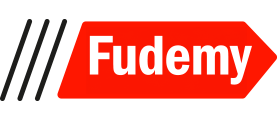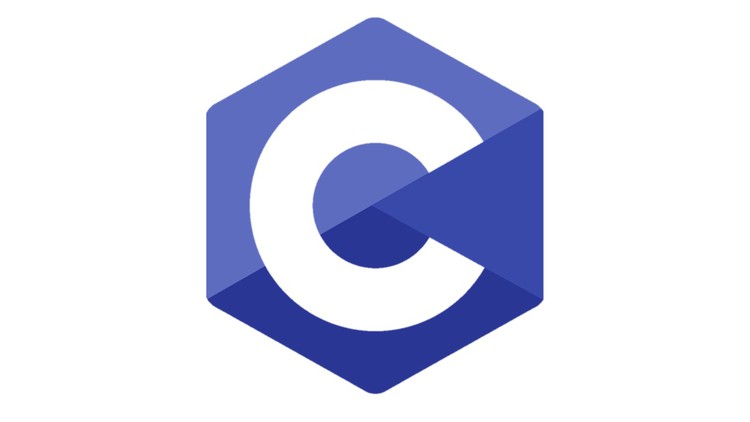What
You’ll Learn
You’ll Learn
- Learn the fundamentals of computer systems and programming
- including software categories
- operating systems
- and programming languages.
- Explore program development using GCC and create your first program.
- Understand control structures in C programming
- including branching statements and decision structures.
- Master different types of loops in C
- including for
- while
- and do/while
- and learn how to use break
- continue and goto statements
- Understand type casting in C and the difference between implicit and explicit type conversion.
- Learn about functions and storage class in C programming
- including user-defined functions
- function input and output
- and the use of pointers and recursion.
- Dive into the world of arrays and strings in C
- including linear and binary search
- passing arrays to functions
- and string manipulation using library functions
- Get an introduction to computer networking and network peripherals
- including LANs
- WANs
- and MANs
- intranet and internet specifications and role of servers.
- Learn about the intersection of hardware
- software
- and network peripherals
- including the use of hubs
- switches
- and routers in networking.
Requirements
- Basic understanding of computer science concepts.
- Willingness to learn and practice programming in C.
- A computer or device with internet access.
Description
The “Fundamentals of Computer Systems and C Programming” course is essential for anyone looking to gain a deeper understanding of how computers work and how to effectively program them. Learning about the hardware and software components of a computer system gives students a holistic perspective on how technology works and how to optimize performance. Additionally, the C programming language is widely used in many industries such as embedded systems, operating systems, and data analysis. It’s considered as a low-level language and mastering it can open the doors to a wide range of career opportunities. Furthermore, this course provides the students with a foundation for more advanced programming languages and concepts, making it a valuable asset for anyone looking to pursue a career in computer science or a related field
COURSE OUTLINE
Computer Systems and Programming Fundamentals
In this section of the course, we will be covering the basics of computer systems, software categories, and operating systems (OS). We will delve into the different types of computer languages, including programming and embedded systems, as well as the concepts of syntax and semantics and how they relate to compilation into assembly and program errors. We will also explore program development using GCC and how to create your first program. Additionally, in the second lecture, we will be discussing the basics of declaring variables, data types, and tokens in C, as well as constants, variables, and declarations. We will also cover basic input and output in C, format specifiers, and the various types of operators in C including arithmetic, relational, logical, assignment, increment and decrement, conditional, bitwise and special operators, and the hierarchy of operators and the difference between global and local variables.
Control Structures in C Programming
In this section of the course, we will be diving into control structures in C programming. We will cover topics such as the type of condition, selection of branching statements, types of programming structure, decision structure, and the difference between control structure and control statement. We will also learn about simple if and else conditions and write a C program to check whether a given number is positive or negative. Additionally, we will delve into decision control structures, including nested if else, and write programs to find the largest number among the three numbers entered by the user, and to determine whether a given year is a leap year or not. We will also cover the C switch statement, and write a program in C which is a Menu-Driven Program to perform a simple calculation. Finally, we will explore the switch case statement in C language in more detail.
Loops in C Programming
This section of the course will cover the topic of loops in the C programming language. We will begin by discussing the control structure loops and the types of loops available in C such as pre & pro-test loops. We will then explore the different types of loops such as the for loop, while loop, and do/while loop. We will also delve into the use of break, continue and goto statements in loops. Additionally, we will look at nested loops and their syntax in . We will also learn how to use nested loops to create a pyramid pattern in C.
Type Casting in C Programming
In this section, we will cover the topic of Type Casting in C programming. We will discuss what type casting is and how it is used in C programming. We will also explore the concepts of implicit and explicit type conversion, and provide examples of how these concepts are used in C programs. Additionally, we will discuss the inbuilt typecast functions in C and their usage. We will also explain the difference between type casting and type conversion in C programming. The section will also provide a C program to demonstrate the concept of implicit and explicit type casting.
Functions and Storage Class in C Programming
The section of the course focuses on functions in C programming and storage class. It begins with an introduction to functions in C language, including examples of real-life applications and the advantages of using functions. The syntax and different types of functions are also covered, such as user-defined functions, function input and output, and function calls with arguments/parameters. The section also covers function prototypes and the use of three parameters in an example of calculating the area of a circle. The section also covers the structure of function and function type based on structure.
Additionally, the section covers storage class, including local or automatic variables, external storage class, global variables or external variables, static variables, and register variables. The concept of call by value and call by reference is also discussed, including the use of pointers, address assignment, and the advantages and disadvantages of each method. Lastly, the section covers recursion in C programming and the use of recursive functions, specifically focusing on the factorial function.
Arrays and Strings in C Programming
In this section, we will cover various topics related to Arrays and Strings in C Programming. Firstly, we will discuss why we need arrays, how to declare and access array elements, and different types of arrays. Also, we will cover how to initialize an array in C programming. Then, we will delve into the topic of linear and binary search in C programming. We will discuss the advantages and disadvantages of linear search and write a program in C to sort elements of an array in descending order. Next, we will explore the topic of passing arrays to functions. We will cover passing an entire one-dimensional array to a function, passing an entire multidimensional array to a function, and passing arrays as parameters. We will also cover the topic of multi-dimensional arrays in C, discussing the size of multi-dimensional arrays, two-dimensional arrays, and learn how to declare and initialize 2D and 3D arrays. Lastly, we will focus on the topic of strings in C language. We will cover string variables, changing string variables, string input and output, string functions, string length, string comparison, string concatenation, string manipulation using library functions, passing strings to functions, and string library functions.
Computer Networking and Network Peripherals
In this section, we will cover the topics of Computer Networking and the Intersection of Hardware, Software and Network Peripherals. Firstly, we will introduce the topic of computer networking, discussing the advantages and disadvantages of networking, the fundamentals of network classification such as LANs, WANs, and MANs, intranet and internet specifications, the role of client and server computers in networking, peer-to-peer networking and client/server networking. We will also cover the topic of network topology, discussing the advantages and disadvantages of different network topologies. We will delve deeper into the intersection of hardware, software, and network peripherals. We will cover the various types of network peripherals such as the Network Interface Card (NIC), Repeater, Hub, Bridge, Routers, and Switch, and explore their uses and capabilities in the context of computer networking.
Who this course is for:
- Are you eager to dive deeper into the inner workings of computer systems? Look no further! Our course on the Fundamentals of Computer Systems and C Programming is tailored to give you a comprehensive understanding of how computers function at the core level.
- Want to sharpen your programming skills and master one of the most popular and powerful programming languages? Our course will give you a solid foundation in C programming
- equipping you with the knowledge and tools to write efficient
- high-performance code.
- “Whether youre a computer science or engineering student looking to expand your knowledge or a professional looking to boost your career
- this course is designed to provide you with the essential skills and understanding needed to excel in the fast-paced world of technology.”
- “With the growing importance of computer systems in every field
- this course provides a unique opportunity to gain hands-on experience and skills that are in high-demand in todays job market.”






